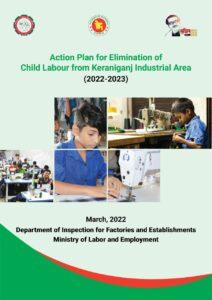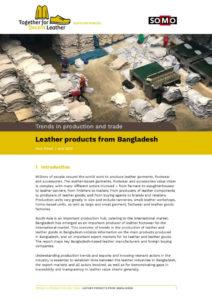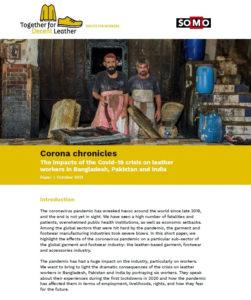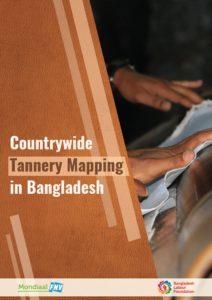Study Report on Child Labour Situation in Keraniganj Local Readymade Garments

Bangladesh Labour Foundation commissioned this baseline study intending to identify the nature and prevalence of child labour as well as the socio-economic status of the workers in the downstream garment industry in Keranigonj Upazila under Dhaka District.
The specific objectives were to:
a) identify the number of child labour in downstream factories
b) find out the type and prevalence of child labour in RMG plants
c) explore socio-economic indicators, e.g., age, gender, education, wage & benefits etc.
d) understand the attitude of relevant stakeholders (e.g., employer, trade union leader, NGOs, experts, government officials, etc.) towards child labour.
e) find out the consequences of child labour.
f) identify challenges to eliminate child labour.
g) provide a set of recommendations.
The study adopted a combination of quantitative and qualitative data collection methods, i.e., Mapping, Survey, FGD, and Key Informant Interview (KII). Altogether 400 workers (70 girls and 330 boys) were brought under the survey. Altogether 96 respondents joined in 12 FGD sessions representing NGO Staff, Trade Union Leaders, and Girls and Boys Child Labour. Eight (8) KIIs were conducted with purposively selected NGOs, Trade Union, and relevant GoB Department representatives. A range of available documents was also used in the study as secondary sources, e.g., Constitution of Bangladesh, Labour Act 2006, National Child labour Elimination policy 2010, ILO Convention (1999), and Child labour survey of Bangladesh Government (2013).
The mapping identified 10256 (9221 boys and 1035 girls) children working in 5714 factories located in 314 towers. The prevalence of child labour, aged up to 14 years is 13.23% and adult labour aged 15 and above is 86.77%. Most of the children have come from coastal districts like Barisal, Bhola and Shariatpur. The survey findings depicted that all of the children are from a poor economic background with limited access to education or any other opportunities to develop their life skills. Among the boys and girls the highest percentage was in the 13 to 14 age group, 70%, and 73% respectively; and overall 71%. The mean age of boys and girls was 13 and 14 years, respectively. Overall, 0.7% of respondents can read only. 21% of child workers completed primary level education. Only 0.2% of child workers had Madrasa education. A higher level of education was less among boys. Most of the children don’t live with their families and consider their Trainers (Oshtad), or, Factory Owners as guardians. The survey, FGD and in-depth interviews revealed that poverty is the main reason that forced children to join the hazardous labour market by saying goodbye to schools and playgrounds. It has been found that most of the children came from coastal districts where river erosion is a common phenomenon and the consequences are losing jobs and migration. In addition, the traditional practice, it is well accepted that children are responsible to support their families. However, it can be said that child labour is the result of many factors, including poverty, social norms, lack of opportunity, migration and emergencies. These factors are not only the cause but also the consequences of social inequities reinforced by discrimination.
The highest percentage of child workers (40%) reported an income of less than Tk. 500. The second-highest percentage of respondents mentioned (26%) monthly income was between Tk. 4001 to Tk. 8000. Twenty percent (20%) of child workers were in the monthly income group between Tk. 500 to Tk. 1000. Very few (2%) child workers reported receiving above Tk. 10,000.
The study has found that children from different areas of Bangladesh enter the market through their kinship networks. The karigor (Ostad) usually picks them from their areas or villages to have higher control over them.
Child Labours often face different types of common abuse as reported by the respondents. The common list includes shouting, using abusive language, physical abuse (e.g., beating, slapping, kicking, pulling them by their hair, throwing objects/tools); touching the shoulders, breast or backs, or thighs of the girl child; sexually explicit or suggestive text messages, photos, or videos sent on mobile phones; forceful observation of porn/sex clips by seniors of the boy workers; and repeated unwanted proposals to girl/boy workers by some Karigor and seniors to have sex with them.
The study found that child workers are put into health and security risks due to the conditions of the factories. The girl workers have to share an unhygienic toilet with male colleagues, which is more difficult for them during menstruation. The attitude of male colleagues greatly affects their health and makes them traumatized.
The physical and mental growth of Child Workers often remains under severe challenges. In addition, discrimination, exploitation, and torture have become a regular occurrence for these children, and poverty happens to be the main cause.
Related posts




